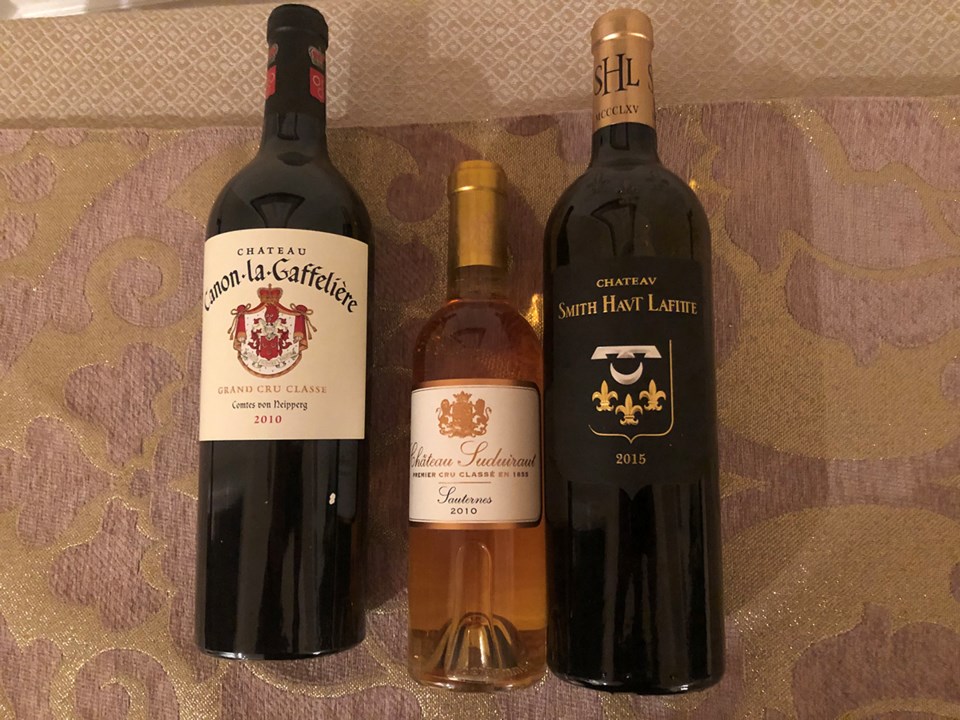This article is part three of my primer on Bordeaux wines. Bordeaux not only has great growth wines but is also know for Sauternes, white wine and right bank wines.
Bordeaux white wines are normally a blend of two grape varieties: Sauvignon Blanc and Semillon. Some of you may be familiar with Sauvignon Blanc but Semillon is not as well-known as it is normally used as a blending grape. I find Semillon helps to mellow the acidity of the Sauvignon Blanc grape so Bordeaux white wines are quite unique in that they have crisp acidity yet some body and ageability. Nice out of the bottle but they really show well after about five years of ageing.
Sauternes are wines similar to icewines in sweetness. Sauternes are made by blending Sauvignon Blanc, Semillon and Muscadelle grapes into a wine. Sauternes wines are made by leaving grapes on the vine until they get affected by a fungus called Botrytis or “noble rot”. The climate in the Sauterne region is one of the few places in the world where this can occur successfully. Sounds disgusting but the result is that the grape gets shrivelled and the flavors of the grapes are concentrated into a syrupy liquid which is then fermented into wine. What is created is a sweet but floral wine that is incredibly delicious. Sauternes are normally paired with cheeses and fruits at the end of a meal but they are also great appertif wines to start out the night.
In my previous Bordeaux articles, I talked about the 1855 Classification System. But there are also some magnificent "right bank" wines that are not part of this classification system. The term "Right Bank wines" refers to Bordeaux wines produced on the right side of the Garonne River and the Gironde Estuary. Almost all red wines from Bordeaux are a blend of Cabernet Sauvignon, Merlot and a bit of Cabernet Franc. Because of climate differences, in general, red wines from the "right bank" of Bordeaux have a higher content of Merlot whereas l"eft bank" red wines (ie. Wines produced in region on the left side of the Garonne River and Gironde Estuary) have more Cabernet Sauvignon in their blend.
Now that you have all the basics about Bordeaux wines, you are ready for the liquor stores’ Bordeaux Release of the 2017 vintage on September 26, 2020. It is the biggest wine event each year at liquor stores. Look for my article on what to buy on September 26 2020 and special live tasting of the 2017 Bordeaux wines on Instagram at 5 p.m. that day!
This article’s recommendation is Chateau Citran 2005. Bordeaux reds really need to age so at $34.99 a bottle, you are getting a wine that has already been aged 15 years and is ready to drink. This wine is a blend of 50-per-cent Cabernet Sauvignon and 50-per-cent Merlot. 2005 was great, hot vintage in Bordeaux and this wine should exhibit bold blackberry and black plum flavors, soft tannins and a tobacco aftertaste.
Until next time, happy drinking!
Tony Kwan is the Richmond News' new columnist. Lawyer by day, food and wine lover by night, Kwan is an epicurean who writes about wine, food and enjoying all that life has to offer.



